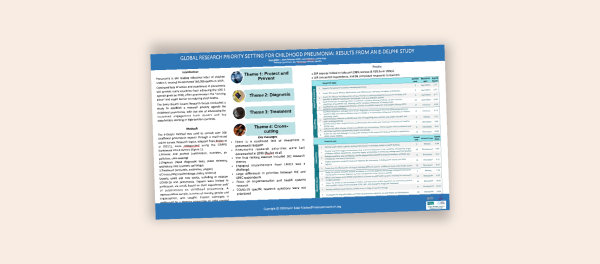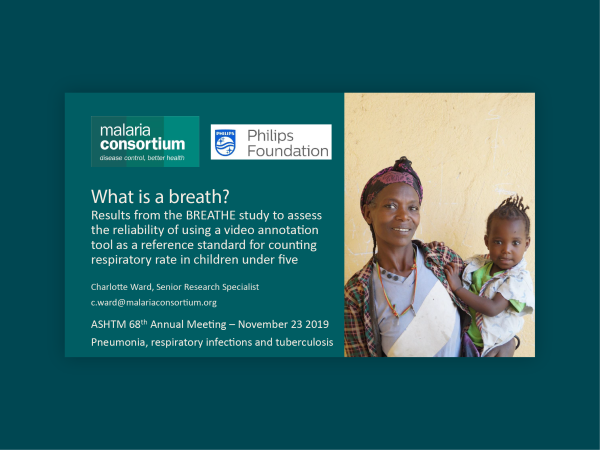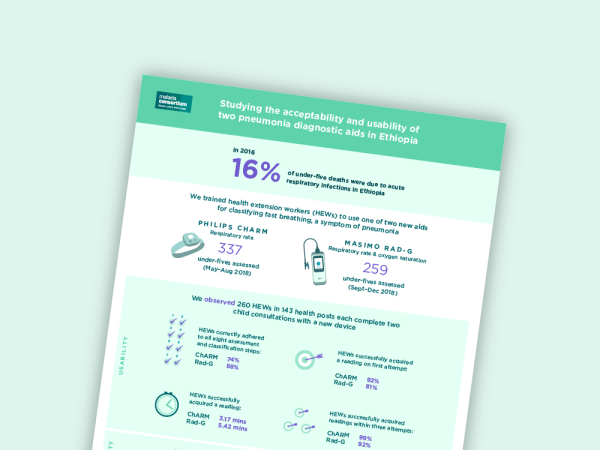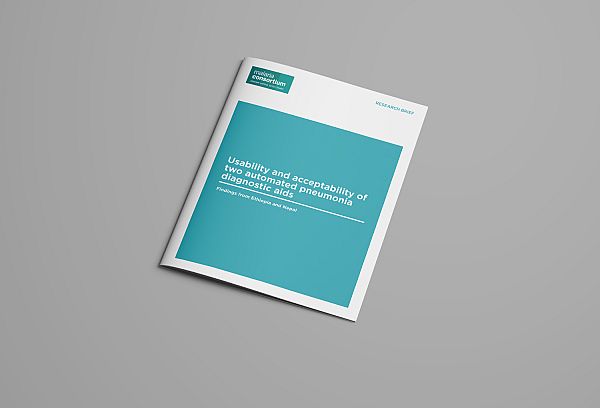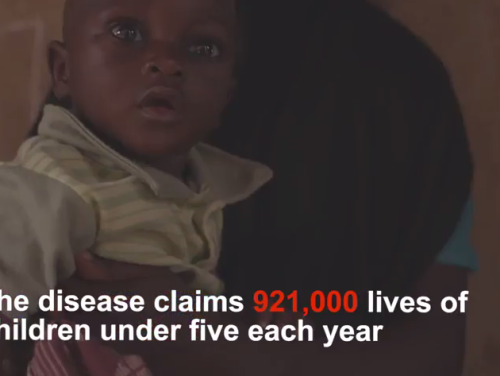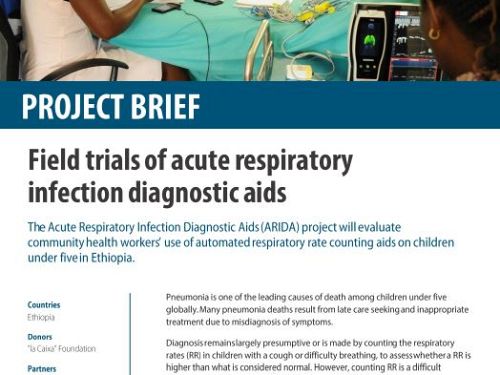Project overview
This project identified the most accurate, acceptable, scalable and user-friendly respiratory rate (RR) timers and pulse oximeters for diagnosis of pneumonia symptoms in children by community health workers (CHWs) and first level health facility workers (FLHFW) in four low-income countries.
Pneumonia is one of the leading causes of death in children under five in both Southeast Asia and sub-Saharan Africa. A large number of the children who die from pneumonia do so as a result of inappropriate treatment due to misdiagnosis of symptoms. In order to tackle the large number of childhood deaths from this preventable and treatable disease, ministries of health are investing in community health workers to deliver lifesaving diagnosis and treatment with antibiotics.
CHWs and first level health facility workers diagnose pneumonia, primarily through counting the respiratory rate of children who have cough or difficulty breathing. However counting respiratory rates is often challenging, even for highly trained health workers, and misclassification is common. Pulse oximetry has been identified as a reliable and non-invasive tool to identify the levels of oxygen in children’s blood as low levels of oxygen in the blood (hypoxemia) is a symptom of severe pneumonia; a strong predictor for pneumonia-related death. But relevant devices are rarely available outside higher level health facilities.
For this reason, a growing number of research groups are focusing on innovative approaches to improving pneumonia diagnostics through the development of easy-to-use mobile phone applications and electronic devices. These tools focus on different approaches to diagnosing pneumonia such as measuring respiratory rate, heart rate, using automated accelerometers or cough/lung sound detectors. The clinical performance, usability and acceptability of these tools in endemic settings are still largely unknown.
This project evaluated the use of various respiratory rate timing and classification devices, as well as pulse oximetry devices among CHWs and FLHFWs with different levels of training in Cambodia, Ethiopia, South Sudan and Uganda.
Malaria Consortium selected these four countries due to the high proportion of under-five deaths caused by pneumonia in each of these. In addition, ministries of health in all four are implementing programmes where pneumonia is diagnosed and treated at community level, although their CHW programmes differ substantially across key areas such as length of training, CHW literacy level and devices used to count respiratory rates.
The project systematically reviewed the landscape for existing tools and devices which were appropriate for low-resource settings; identified the most promising and appropriate devices for field testing; established their accuracy in supporting the diagnosis of pneumonia symptoms or measuring oxygen levels in the blood when used by CHWs and FLHFWs and finally, explored their acceptability and usability as perceived by CHWs, FLHFWs and caregivers.
The long-term success of this project will be measured according to the large scale uptake of the easy-to-use, low cost and acceptable devices that will be recommended for global use. For this reason, the project was committed to working hand-in-hand from the beginning with ministries of health, other national stakeholders, international stakeholders and a scientific advisory committee with appointed relevant experts.
back